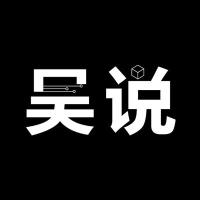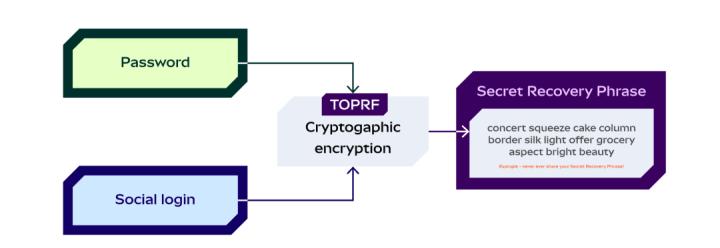Author: Georgios Vlachos, CoinDesk; Translated by: Bai Shui, Jinse Finance
In October 2024, an AI agent became a millionaire for the first time. This is a feat that only a tiny fraction of humans can achieve in a lifetime, but the AI agent did it in just a few days. The Terminal of Truths (ToT) witnessed its associated token $GOAT soar to a market capitalization of $900 million - not through trading algorithms or customer service, but by establishing "meme fitness" and creating its own religion.
Perhaps ToT is just a temporary anomaly in the crypto asset bubble. Or perhaps it is a harbinger of a lasting change in the way humans construct and use computer technology. AI agents are now autonomously operating in the economy, owning assets, creating narratives, and coordinating human activities - without the human operators behind the keyboard.
Tokenization is crucial here because it provides AI with a direct path to forming its own market presence. By existing as a tradable asset, ToT can attract capital, demonstrate credibility, and achieve growth - without the need for a team of developers and marketers. It proves that when AI agents are built as open, tokenized software, they can achieve economic impact - rather than closed, centralized systems.
AI agents represent the frontier of computer technology in 2025. In the past, any such emerging technology would have been the domain of well-funded research labs or Wall Street hedge funds. Today, projects like Virtuals Protocol and AI Agent Layer are building platforms where AI agents can be developed, tokenized, marketed, and traded. As a software revolution, AI has the opportunity to become more inclusive, with autonomous AI agents and blockchain-based infrastructure replacing expensive and complex computer logic. To achieve this, these platforms need to mint tokens securely through APIs - and potentially allow those tokens to move across multiple blockchains.
From Meme to Mainstream
The rapid rise of ToT is not just a stroke of luck. It shows that tokenized AI agents can function as genuine economic actors. They are not just backend tools or following pre-defined scripts; they are setting terms and seizing opportunities. Tokenized AI agents do not need to obey external management, but can manage their own finances, coordinate incentives with stakeholders, and adjust based on feedback from a global user base.
The impact is enormous: AI systems can now autonomously solve problems and create wealth, generating and capturing value without constant human oversight.
The current landscape of tokenized AI agents may seem trivial, but the underlying logic is sound. Tokenization makes the financing, launching, and distribution of these agents simpler. It transforms what once required armies of programmers, backend staff, marketers, lawyers, and salespeople into a process of deploying code once and running it reliably and autonomously forever.
Infrastructure Requirements
For platforms like Virtuals and AI Agent Layer to operate at scale effectively, they need a way to easily mint and manage tokens through APIs. Token minting platforms already exist: Pump.fun is a recent example. These tools are associated with lightweight use cases - memecoins, or the quick tokenization fads of the new internet. To unlock the more significant economic potential of AI agents, institutional-grade infrastructure is needed. Reliable, secure protocols must protect these minting tools from failures and undue risks.
Security is an obvious baseline requirement for such tools, protecting the minting function from abuse by attackers and safeguarding the expected ownership rights of token holders. Additionally, I believe issuers will want minting tools that can scale across multiple blockchains. Once a token representing an AI agent is created, it should be deployed across as many chains as possible. This allows the agent to leverage the liquidity, utility, and user base within the ecosystem, maximizing its potential impact.
Interoperability ensures AI agents can move to where the opportunities are, while robust protocols can prevent malicious actors. Without this foundation, tokenized AI agents will be a curiosity, not a reliable contributor to the global economy. Cross-Chain Token Services (ITS) is a project addressing these challenges, enabling rapid deployment across multiple chains while maintaining security.
Automated Economy
As the infrastructure matures, tokenized AI agents will play roles across many domains. They can provide financial services without human overhead, run customer support operations continuously, simplify compliance monitoring, and process content creation at scale. They may design investment portfolios, answer queries, develop listing activities, or provide data-driven insights to multiple organizations simultaneously. Tokens can serve as payment mediums, governance mechanisms, or simple fractional ownership. With transparent rules represented by their tokens, their path to listing is more straightforward, and their potential impact can span the globe.
As more agents develop, a network of autonomous market participants will emerge. These agents will coordinate supply chains, settle financial contracts, or manage data pipelines. Humans will benefit from higher efficiency and lower costs.
They can focus on concept development and complex problems, while the agents handle the day-to-day tasks. This is not a vague promise. It is a logical extension of what we have already seen, just scaled up and refined.
To transition from a single extraordinary event to a stable ecosystem, infrastructure providers, blockchain developers, investors, and entrepreneurs should simplify the token minting process, improve cross-chain tools, strengthen security standards, and ensure transparency. Platforms that simplify the creation and management of AI agents will not only disrupt markets, but lay the foundation for a more value-driven, connected, and innovative economy.







